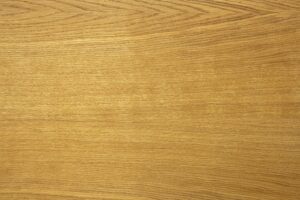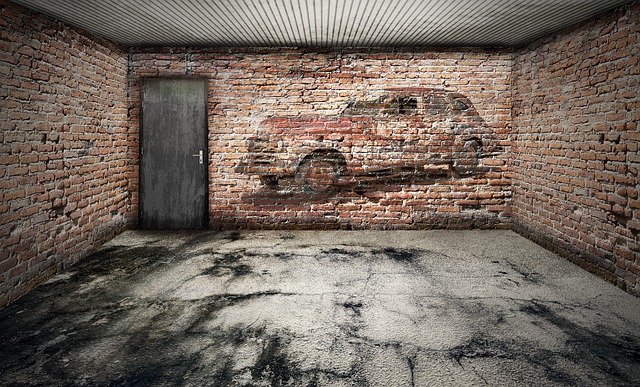How to Remove Paint from Wood Trim
Here’s how to remove paint from wood trim. After several paint jobs in your home, the interior wood trim can become encrusted with several layers of paint, leading to the loss of shape, detail, and contours.
If you are experiencing this challenge with the wooden trim in your home, you might want to remove the paint entirely before applying a natural wood finish. Nevertheless, stripping paint from wood trim can turn out to be a tedious task with negligible results.

In addition to the complexity involved in getting all the edges, the wood trim may not be restored to its original look. The ideal method for eliminating dry paint spillage from wood trim is determined by whether latex or oil-based paint was used.
How to Remove Paint from Wood Trim
If you are dealing with oil-based paint stains, mineral spirits are sufficient, but one should exercise caution not to soak the wood or risk causing damage to it.
On the other hand, a clean rag, denatured alcohol, and a lot of perseverance are all you need to remove latex paint without damaging the wooden material.
The requirementss are Clean rags, Methylated spirit, sandpaper (fine grit), A clean damp cloth, and Mineral spirits.
Steps to remove the stain; Attempt removing fresh latex paint using water. Soft water logged color is sufficient for removing a spot of latex.
- Soak a soft cloth rag in warm water
- Wring out excess water from the rag to prevent dripping water on unaffected areas
- Wipe out the place of paint. It is recommended to rinse and re-soak the paint several.
- Wipe the wood trim dry using a different dry rag
See Also: Paint for a Concrete Driveway
1. Using denatured alcohol to remove latex-based stains
For fresh paint drips, gently brush the dripped paint using a paintbrush over the wooden trim surface. Proceed to step 2 if the paint has partially dried or splashed onto unpainted wood trim.
If you are dealing with latex paint, all you need is to rub it off with a clean rag and denatured alcohol. Denatured alcohol represents one of the most effective methods for ensuring that no damage is caused to the wooden surface. However, thicker and old paints may require some extra effort.
- Apply just enough denatured alcohol to dampen the rag
- Pass the alcohol-soaked rag over the paint spot. Accordingly, rinse, re-soak, and repeat as necessary.
- When finished, dry the spot with a clean and dry rag.
2. Removing fresh oil-based paint using mineral spirits
Wet the spot rag with mineral spirits if you are dealing with an oil-based paint. For the best results in getting rid of the fresh paint, respond as fast as possible.
- Immerse a soft clean rag into a small bowl of mineral spirits. Only dip a small area of the cloth.
- Eliminate the paint stain bypassing the mineral spirit over the spot. Rinse and soak as deemed necessary until the paint has been eliminated.
- Dry out the area with a separate dry material
- For dried water paint stains, sand the stain with a piece of 100-120 grit sandpaper.
- Using a small size of sanding ensures that other areas of the trim are not affected. Subsequently, brush the sandpaper dust and paint residue away by using a clean and dry paintbrush.
See Also: Concrete Rust Remover
3. Removing dried paint stains using heated linseed oil
Dry paint spots can be softened through soaking and scrubbing them off using heated linseed oil.
- Dip a small section of the clean rag in heated linseed oil
- Apply the soaked section directly to the stain.
- Hold the damp cloth to the stain for 30 seconds to 1 minute to soften the patch.
- Wipe away your softened paint spot using the linseed oil soaked material
- Dry the area using a separate dry rag
See Also: Deck Stain for Pressure Treated Wood
4. Using mechanical methods to remove dried stubborn stains
If the stain cannot be washed away after being softened with heated linseed oil, a butter knife can be used to scrap beneath the spot and lift the stain off the trim wood.
- Gently scrub using a butter knife to eliminate the softened paint drip; use gentle strokes to loosen and lift the stain.
- Subsequently, wipe the wood surface trim using a clean, soft cloth.
- For dry oil-based paint, read the label directions to identify the most recommended thinning agent for that specific paint. Whereas latex paints tend to be fairly generic in their composition, oil-based paints tend to be individually formulated, utilizing spirits, oil and acetone as the thinning agents.
- Use a cotton swab to apply the thinning agent to the stained spot. A paint remover may also serve the same purpose.
- To remove any residues, rinse the spot thoroughly with a wet rag dipped in mineral spirits.
4. Sanding using the hand
- Apply hand sanding on the toughest paint stains.
- Applying light pressure using the finest grit also serves the same purpose.
- Since mechanical sanders apply significant pressure and may damage the wood trim, hand sanding is preferred, particularly for small confined spaces.
- Coarse open coat sandpaper is preferred for this purpose.
- It is highly recommended to sand along the wood grain rather than against to prevent causing damage.
- You might want to decrease the paper’s grit from a medium to an excellent pick, depending on the stain’s nature.
See Also: Best Sealant for Metal Roof
5. Using a heat gun
Using a heat gun to apply heat on hardened spots to scrap off paint is highly recommended as it softens out for removing paint from the wood trim. After positioning the equipment 6”-8” from the painted wooden surface, switch the heat gun.
- Hold the equipment near the surface for the best results.
- Slowly move the heat gun over the surface you are working on, up and down, and side by side.
- Scrape up the paint as it wrinkles once it begins to bubble and wrinkle
- Scrub off the surface gently to minimize damage.
See Also: Stain for Douglas fir Door
Additional Advice and Recommendations
A clean rag, methylated spirit, and fine-grit sandpaper are all you need to remove oil and latex-based paint stains without causing damage to your wood trim.
While mineral spirits are ideal for clearing oil-based paint stains, you should be careful not to soak the wood by applying just enough to prevent damage. Subsequently, clean thoroughly with clean water and dry the surface out once the paint stain is removed.
In case of discoloration, touch the surface up with a wooden finish. If you have a wide area to cover and scraping doesn’t get the stain off, use fine-grit sandpaper. Avoid sanding hard to avoid wearing the wood.
All you need is to break the dried pain significantly and allow damp ragging to finish the job. On the other hand, using sandpaper is considered the best approach if dealing with a stubborn oil stain.
If scrapping, soaking the stain in a rag, and heating is not sufficient in eliminating the stain, a solvent may come in handy in eliminating any residue of dried up paint.
A microfiber rag soaked in solvent and then rubbed off carefully is recommended to prevent damage to the wood grain. In case you unintentionally scratch the wood trim during scraping, you might want to try applying tinted wood wax.
See Also: How to Stain a Deck for the First Time
Similarly, stain markers are ideal for a quick touchup. If you are dealing with dry paint in small cracks and between floorboards, use soap and water, or a solvent dipped in cotton swab or a worn-out toothbrush.
As compared to water, methylated spirit guarantees more effective and faster results. Conversely, a razor knife will help you get all the corners and other tight spots on your wood trim.
To determine whether an old stain is oil or latex-based, rubbing a cotton bud soaked in methylated spirit on the drip can do the trick. For latex-based paints, the color comes off the drip.
If you choose to refinish your trimmed wooden floors, an orbital sander and sandpaper are sufficient if you are looking to avoid causing damage to the surface. Moving the sander across the floorboard as if mowing the lawn will give you that much-sought outlook.
See Also: Antifouling Paint for Fiberglass
Conclusion
Keeping a maintenance routine is vital in ensuring that wooden trim surfaces maintain their natural look. While eliminating dirt particles keeps your cover in a pristine condition, utilizing a mild cleaning solution also supports all the stains at bay.
Nevertheless, water is wooden surfaces’ worst enemy, and you should ensure that the rag used is just damp. Part of the care routine for wooden trim is ensuring that any moisture applied is dried out to prevent mold stains.
Whether you are an expert or a DIYer looking to restore the look of that wooden trim surface, the above precautions will leave your surface in great shape for a long time to come.





